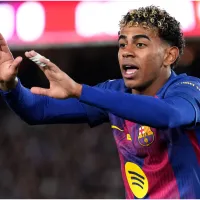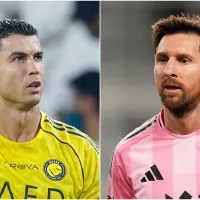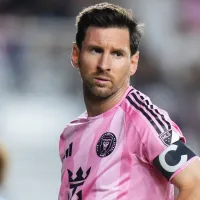
Over the coming weeks, Stephanie Yang, new contributor to World Soccer Talk, will be tackling a series of major questions facing the National Women’s Soccer League as it approaches its third offseason. In her first installment, Stephanie analyzes the league’s expected partnership with Orlando City SC – potentially the third Major League Soccer franchise to venture into the NWSL.
The NWSL is not like the women’s soccer leagues came before it. It’s not just the structure of the league and the tight financial caps that distinguish it; it’s the very fact of its existence. No American women’s pro soccer league has made it out of the third season.
A week short of Oct. 1’s NWSL championship game, the league sits on the cusp of a fourth season, not only with all its founding teams still onboard but prepared to expand for the second time. The league will have 10 teams in 2016, with Major League Soccer franchise Orlando City SC starting a women’s side.
NWSL’s last expansion was with the Houston Dash in 2014, the league’s second year of operation. Coach Randy Waldrum has stated that, from inception to actually playing a game, the Dash, a partner of MLS’s Houston Dynamo, had about 90 days to pull everything together. That means rosters, staff, logistics – everything.
SEE MORE: Report: NWSL will expand to Orlando in 2016.
But the Dash are still in the league and have found a measure of success – if not on the field (having yet to make the playoffs) then with ticket sales, going from what was already the league’s second-highest league average attendance of 4,650 in 2014 to 6,413 in 2015, a 38% increase. This is in no small part due to the World Cup bump and the presence of final hero Carli Lloyd, who spent the league’s first two years with Western New York. The combination of increased attendance and the stability of an established MLS team’s infrastructure show that the league was both ready and able to handle an expansion.
Two years later, the league wants to expand again, begging the questions: Is it ready? Is it able?
Ability is the easier question to answer, since expansion is again going through an MLS team. While itself a new expansion team in MLS, Orlando has had robust attendance in its inaugural season with an average of 31,987 so far, second highest in the league. With that infrastructure comes facilities, a front office, staff, training resources, community resources, sales and marketing know-how and all the little things that go into a running a pro sports team.
The real question is readiness. Is Orlando ready for a women’s team? How do you translate the ticket sales on the men’s side to the women’s side? There’s no guarantee that Orlando City men’s fans will be interested in or able to watch Orlando City women.
But Orlando City SC fans think the franchise is ready. Jessica Konecny, a member of The Ruckus, one of Orlando’s official supporters groups, says that soccer is now an established sport in Orlando and central Florida. Via email:
“Orlando City SC announcing an NWSL team franchise could not have come at a more perfect time. There is already such a heightened excitement around soccer in this city in general because of Orlando City SC but the fact that the U.S. Women’s National Team just won the World Cup will play heavily in this new team’s favor. The U.S. Women’s National Team will be playing a Victory Tour match at the Citrus Bowl on Sunday, October 25th and I think this will be a perfect test to gauge the city’s enthusiasm for a women’s team.”
In addition to questions on the Orlando side, expansion will certainly have an effect on the rest of the league, starting with the schedule and the expansion draft. For the former, things will get easier, as an even 10 teams make for a much smoother schedule than an odd nine. But for the latter, many a carefully planned roster may now go awry as teams have to decide who to protect and who to put into a pool from which Orlando may draft a handful of players.
Then there’s allocation. US Soccer, Canada Soccer, and the Mexican Football Federation pay the salaries of a select group of national team players, effectively subsidizing the league and allowing clubs to focus their budgets on players with less name recognition without shelling out as much for heavy hitters. When the league started, these allocation rosters were divided amongst eight teams, but now with 10, that’s theoretically fewer allocated players per team.
Clubs are free to trade their allocated players, however, and no longer have to trade allocated for allocated as they did in year one, allowing some teams to stack themselves with national talent (FC Kansas City, five U.S. allocations) while others to go nearly without (Boston Breakers, two). National federations probably won’t be increasing their allocation budgets, either, leaving the same number of allocated players to circulate amongst clubs.
Orlando will certainly get an initial allocation, since one of the central tenets of the league’s marketing is getting to watch U.S. national-team talent. Orlando will want their own national team names to build an advertising campaign, especially in an Olympic year. There’s nothing quite like getting to say “gold medalist X” will be in the house.
And then there’s the money. NWSL does engage in some level of profit-sharing, and naturally, MLS-backed sides probably stand to pay back into the league the most. As reported by the Portland Business Journal, the Thorns were the only team in year one to turn a profit and duly paid a portion of that back into the league. Of course there’s no guarantee that an Orlando women’s team will make enough to be giving back some of the excess, but it’s much more likely to do so than, for example, New Jersey-based Sky Blue FC, whose attendance numbers are last out of nine teams (2,189 average attendees in 2015, up from 1,656 in 2014).
There are other performance indicators besides attendance. In an article at Inc.com, MLS commissioner Don Garber listed national and local media coverage, TV ratings, and the use of soccer specific stadiums as metrics to use.
The soccer-specific stadiums metric needs a bit of tweaking to be applicable to NWSL since it’s catch-as-catch-can for each team and their facilities. Some clubs still play on fields with gridiron lines, constrained by budgetary and geographical concerns. But charting NWSL’s transition to using soccer-specific facilities with a certain minimum seating size could be a useful metric.
In terms of national coverage, the league is of course experiencing the most exposure it’s seen since its inception due to the World Cup. There are plenty of complaints that the league and US Soccer haven’t maximized the effects of the World Cup bump, but even inefficient efforts have yielded healthy results.
Average league-wide attendance increased 22%, from 4,139 last year to 5,046. And because the national team was guaranteed a 10-game Victory Tour if they won the tournament, now every primetime broadcast is an opportunity for commentators to link “USWNT” and “NWSL” in people’s minds. Former players like Aly Wagner, Leslie Osborne, Cat Whitehill and Julie Foudy have dutifully talked up the league and its clubs during pregame shows, in-game commentary, halftime and post-match analysis.
Local coverage varies by club, of course, but many NWSL clubs have at least one or two dedicated correspondents who track them throughout the season. Once again, the World Cup comes into play, with local outlets wanting to cover national teamers like Carli Lloyd, and by extension having to at least mention that these players are signed with local clubs.
TV ratings are iffy. NWSL’s broadcast deal with Fox Sports was been hampered by a late announcement that prevented extensive promotion and, of course, competing sports. Some games saw decent ratings, like the 136,000 for the Houston Dash versus Seattle Reign. Other games saw abysmal numbers, like the Reign versus Washington Spirit semifinal, which was up against both the NFL and the US Open tennis tournament and had 48,000 viewers.
But the league did have a deal, and is apparently in talks for next season’s deal – and will hopefully emphasize the context around their low ratings. Much may depend on the numbers generated by the Reign versus FC Kansas City final, to be broadcast on Fox Sports 1 from Providence Park in Oregon on Oct. 1. That puts the final at 9:30 p.m. Eastern time on a Thursday, which is traditionally when most networks schedule their strongest primetime lineups. Seeing an increase in total number of games broadcast, scheduling better days and timeslots, or moving more games from Fox’s streaming service to their actual broadcast could be good indicators of progress.
One of the threads running throughout the questions facing expansion is the World Cup. Whenever there is a league, it always sees a World Cup bump. That is not the issue. The real question is whether that bump can be made to last.
Realistically, the gains from the World Cup probably chart like an exponential function falling off—a nice big spike to start, but then a steep drop-off as the hype fades and the news cycle moves on, finally ending in a more stable and gentle decline. That the World Cup bump would die is a given; it’s that tail end of the chart that matters. Instead of returning back to the original baseline, can the league push its baseline up for an overall gain? Can the league sustain this new baseline, so that in the lean years between World Cups and Olympics, things don’t backslide and clubs remain stable?
Signs seem to point to yes. NWSL was founded during those lean years after its predecessor (Women’s Professional Soccer) had a very public implosion. It was a league built with lean years in mind. Expansion doesn’t have to mean stretching too thin; done correctly, it means bringing in additional resources that don’t stress the system.














